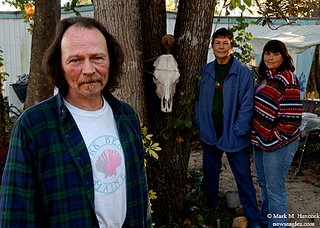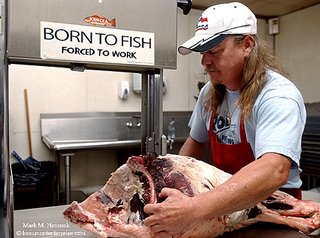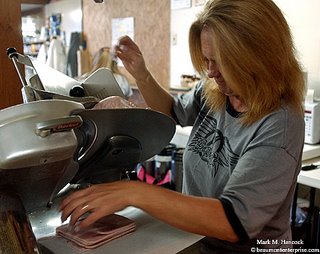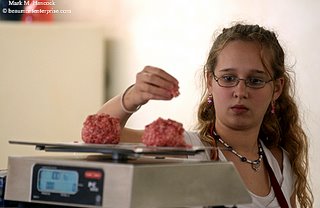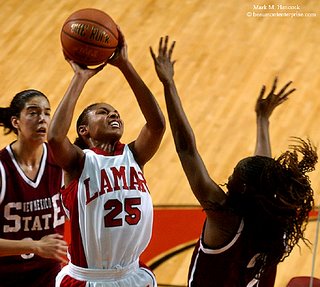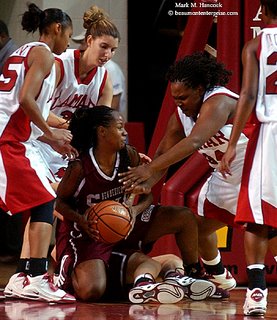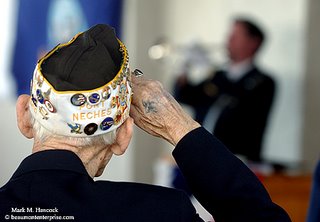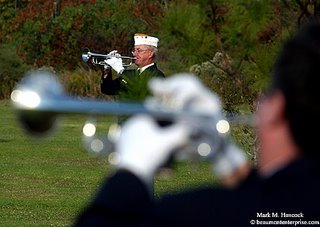Between the time I left the Army and got my degrees, I worked four years as a corporate collector for General Electric Capital. I handled the business revolving charge accounts for a national office supply chain and a popular computer manufacturer.
Each month, I'd be handed several million dollars worth of delinquent accounts and a specific collection goal. With few exceptions, I regularly exceeded my goals. So, I know a bit about collecting debt and how accounts payable departments work.
Let's demystify the process for new PJs. Hopefully nobody needs to use this information. However, it's better to know and not need it than to need it and not know.
Don't take it personallyMost PJs are passionate about what they do and pour themselves into their work. As such, they tend to take negative treatment personally. Business isn't personal. It's about shuffling numbers around.
Pro number shufflers (accounts payable) only want accountability. You're not PJ, a person or even a business to them. Frankly, they could care less about your images. You're only a set of numbers (dollar amounts) tied to another set of numbers (
invoice). If they can clear your numbers off their books, they're happy. If they never got an invoice (for whatever reason), the debt doesn't exist.
Reasonable payment timeThe first problem new PJs have is getting accustomed to accounts payable cycles. Unless a client's contract states otherwise, a reasonable time from invoice to payment is about 30 days.
This means new freelance PJs better have a month's worth of cash on hand, or they're done before they start.
Each business is different, but larger corporations tend to be extremely efficient on the biz side. Rather than buying extra check printing machinery, they schedule payroll checks on a specific Wednesday and accounts payable are handled on the opposite Wednesday.
It sounds fair enough unless a PJ's invoice is sent on Friday, arrives on Wednesday, makes it to accounts payable on Thursday and sits on a desk for almost two more weeks. This is ignoring any delays
before it gets to accounts payable.
This process has changed in recent years as more companies have moved to electronic payments for both payroll and accounts payable. However, this also means the broken printers won't be replaced, so don't get too excited when dealing with a new client.
Without getting into all the details, understand some companies pay promptly upon invoice while others absolutely won't pay until 30 days (to keep accrued interest).
Remind yourselfThe folks who follow the advice in "
Manage your money" (or the longer "
Budget for three months" post) already understand how to track invoices. Otherwise, establish some other way to know when 30 days have passed and payment is due.
Initial actions Thirty days have passed since the invoice date. There still isn't money in a PJ's bank account. What should we do?
Don't panic. The payment was probably in the warehouse fire you covered last week and it got torched. It's a "no fault" situation that can be easily remedied.
Check the mailI know, but we get busy and forget to look in the bill receptacle. Maybe there's a nice treat in there too.
E-mail the clientBecause I was a collector, I hate phones. So I normally e-mail first. Editors are busy, don't waste their time. Be cordial yet direct. Here's a good example:
Invoice?
(sent on Nov. 1)
Cynthia,
Would you know what happened to my invoice? It was for my invoice #GMM06-10 for assignment 555555 for $468.60. I sent the invoice on Oct. 1, 2006 to your attention. This was the "Gators taste like..." assignment. The images were transmitted on Sept. 30, 2006 and the image ran on Oct. 2, 2006. Any info would be appreciated.
Thanks again,
John P. Shooter
Address
City, State, Zip
What was done?The e-mail header and return address should get the editor's attention rather than being seen as spam. The date is automatic, but important for problem accounts.
Address the specific editor or accounting representative. Formal folks might include "Dear" before the name.
We immediately address the question but in a non-confrontational tone. Their initial answer is probably "I don't know." Consequently, they're gently encouraged to find out what happened without being commanded to do so.
We also note every possible tracking number and date associated with the assignment because we don't know how it's listed in their system. Also remind them about the amount, the date it was mailed and the subject of the assignment. Then formally ask for their help.
Thank them and close the e-mail with your current mailing address.
ReactionTypically, editors check with accounts payable and let you know what's up within 24 hours. If they say they didn't get the invoice or it never made it to accounts payable (both are reasonable mail problems), ask if you can e-mail or fax the invoice again. If yes, do it
now with a note requesting a confirmation. "Please let me know you got this without problems" is normally good on the resubmission.
This solves the vast majority of payment problems.
If there is no response to the initial e-mail within one day, pick up the phone. The assignment editor may be off or on vacation. It's important to resolve this quickly to avoid more uncomfortable actions.
If the PJ already has a collection folder, place a copy of all e-mails into the folder as they are sent. Otherwise, make sure to keep a copy in the "sent" folder until the payment is received.
A call normally does it all Folks, who aren't phone adverse, are probably better served by calling. A direct call to the assignment editor typically gets immediate results. Cover the same information listed above. If the editor doesn't know the answers, leave a call-back number.
If the assignment editor isn't available, ask to speak with whoever else could answer an accounts payable question (get their direct number if you can).
If connected directly with accounts payable, give them all the numbers they need to sort through their information. If they don't have a record of the invoice, ask them if you can e-mail or fax the information to them.
In all situations, make sure they have your correct mailing address in their system. Also, note the names of anyone handling the account as you speak with them.
What's the next step?PJs have e-mailed and called, but were unable to talk to the assignment editor or accounts payable.
Send a reminder invoice to the attention of "accounts payable." This bypasses an editor who might be sitting on invoices for some unknown reason.
However, we're going to place "
30 Day Notice" in big, bold letters at the top of the invoice. At the bottom, add "
If you've already mailed this payment, please disregard this notice."
If the client is well-established it's probably a paperwork issue. It'll be resolved soon. If this is a new client, go ahead and send the 30 day notice so they know not to abuse you in the future.
In the accounting database, move the account information to 45 days. This is your follow-up reminder.
Collection adviseFrom here onward, PJs become collectors rather than salespeople. We're getting payment for an image that has already been published (our copyright hammer).
Don't threaten. Only tell the debtor what has been
done.
Keep intensity low. Don't take it personally. Get the money owed and conclude business.
Continue the process. No matter what is said, continue a methodical approach until the amount owed (and any fees and/or interest) is in the PJ's bank account.
Phone notesAs journalists, we're all trained to collect who, what, when, where, why and how. As collectors, we collect the same information from accounts payable.
Who sent the payment? (get a specific name)
What amount was sent? (verify amount)
Where was the payment sent? (verify correct address)
Why was it sent late? (to avoid future problems)
How was the payment sent? (snail mail, FedEx, electronic, carrier pigeon)
Obviously, use discretion when dealing with clients. If the information they give is believable, believe them until proven false. As the account ages, it's important to get specific information about payments and create evidence for further actions.
The point of these questions is to solve future problems at first. Later, it's important to have evidence of deliberate violations of truth. If accounts payable said check number XXX was
sent to the correct address on a specific date, and later say they never sent it, this is important to have documented for copyright violation claims.
E-mail the notesPJs should make a folder in their e-mail program for "collections." Any e-mails and phone notes should go into this folder for easy access later.
Before making a collection call, paste the invoice details into a blank e-mail addressed to yourself. Then, paste the questions above below the invoice information. Next, enter the date and numbers called and ask for the names of people who make arrangements or take messages. Quickly type any conversation notes and/or promises they make.
When the call is concluded, send the e-mail notes to yourself and place them into the collection folder. This gives the information a verifiable date and time stamp.
Before each subsequent call, copy the information from the previous e-mail into a new e-mail, update for any fee changes (interest and/or late fees), type the day's date and add new notes. This develops a recorded and verified history of conversations with the client. It also allows the PJ to have immediate access to any information related to the delinquent account.
45 Day noticeIf contact was made at 30 days, follow up via the same route (e-mail or phone) requesting information about when and where the payment was mailed.
Notice we asked when and where it
was mailed. At this point, change the tone slightly to remind the client that the payment should already be in the PJ's hands.
If contact has failedAt 45 days, it's getting serious if no active contact (e-mail or phone) has been established. PJs have tried twice and given plenty of time for editors or accounts payable to return from vacations.
If we still haven't established contact, it's time to (nicely) get someone's attention (and make sure they're still in business). Send them an official notice letter. Use the normal headers and footer, but limit the invoice data. They should know about it by now. Try this sample:
Accounts Payable,
I/we have tried unsuccessfully to contact (biz name) regarding Invoice #GMM06-10 for $468.60. Please contact me/us at your earliest convenience to discuss this account.
If you've already mailed this payment, please disregard this notice.
Sincerely,
John P. Shooter
Phone
Address
City, State, Zip
E-mail
We've added phone and e-mail contact information if it wasn't previously included. PJs might start to use the formal "we" to change the tone of the letter. This lets accounting know the PJ understands this is a business situation. It also implies more than one person depends on the payment (possibly a lawyer).
60 Day actionsAt 60 days, it's time to decide if client is worth the stress. We'll again send our e-mails and make our calls, but we're going to send a late notice letter to secure our legal rights.
If it's a regular client and this is one old invoice and/or they've paid other invoices, make a call and e-mail and send the previous letter. They may have mixed up invoice numbers or some other accounting problem.
At this point, it's important to get all paperwork ready for future actions. PJs who schedule their "hard copyrights" quarterly (opposed to soft copyright upon shutter release) need to send the batch early to secure absolute rights on the images and have a copyright number to present to a lawyer.
If it's a new client, they owe a large amount or the client isn't worth the problem, it's time to resolve this problem.
60 Day Notice
Accounts Payable,
We value your continued business. We have not received payment for Invoice #GMM06-10 for $468.60. Payment was expected on (date). Please contact me/us to resolve this account.
If you've already mailed this payment, please disregard this notice.
Sincerely,
John P. Shooter
Phone
Address
City, State, Zip
E-mail
90 Day actionsIf it's a regular client and this is one old invoice and/or they've paid other invoices, make a call and e-mail and send the previous letter. By now, we should know the reason for delinquency (R4D). However, we need to keep the ball rolling and protect our legal rights.
At 90 days, we're done with any new or infrequent clients. We need to move on to greener pastures. We'll again send our e-mails and make our calls, but we're going to send a demand letter to secure our legal rights. Send this notice with a return receipt request card (make them sign for it).
90 Day demand
Manager Accounts Payable Department,
We have not received payment for Invoice #GMM06-10 for $468.60. Payment was expected on (date). Under the terms of our contract, we demand payment in full. Please contact me/us to verify this payment has been sent.
If you've already mailed this payment, please disregard this notice.
Sincerely,
John P. Shooter
Phone
Address
City, State, Zip
E-mail
120 Day actionsAt four months, we're done. Don't ever take an assignment from this client again (and let other local shooters know what's up as well).
If the client published the image AND the PJ submitted the images for a "hard" copyright, the client is so screwed.
At 120 days without any reasonable R4D, particularly for balances over $500, it's time to enforce copyright. The client is in violation of the contract by not paying. They have essentially stolen the image. It's time to make a packet with copies of the contract, delivery memo, hard copyright info, copies of all e-mails, delinquency notices and collection notes (from phone conversations).
Take the evidence packet to your friendly neighborhood copyright attorney along with a high-end bid for the same image had it been stolen (probably a much higher amount than the gig originally offered).
The lawyer will see the easy money. The lawyer tacks her/his fee onto the end of your fees and sends a demand notice for the new-and-improved total. This is the final nail in the coffin. The lawyer's next steps are to arrange a court date and get treble damages from the client for copyright violation.
Enough for now,




